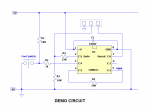Hugh_Jorifice
New Member
I'm trying to work out how to do tap tempo on the M2 chip. Basically I need to time the gap between two or more (usually more) presses of a footswitch and then work out the average reading in milliseconds. I have this working very well on a 28X2, using settimer and preloading the minor tick variable to give me a major tick and increment the timer variable every millisecond.
The problem is that I need to get this working on a 08M2 chip (for many reasons including board space and data table size). I can't find an equivalent function on the M2 chip (just the time variable, which increments ever second or half second depending on clock). Is there a wizard's way of accessing the timer register to preload it like you can on the X2 and getting a faster timer tick?
Sorry if I have missed this on another post and thanks in advance for any help.
The problem is that I need to get this working on a 08M2 chip (for many reasons including board space and data table size). I can't find an equivalent function on the M2 chip (just the time variable, which increments ever second or half second depending on clock). Is there a wizard's way of accessing the timer register to preload it like you can on the X2 and getting a faster timer tick?
Sorry if I have missed this on another post and thanks in advance for any help.

